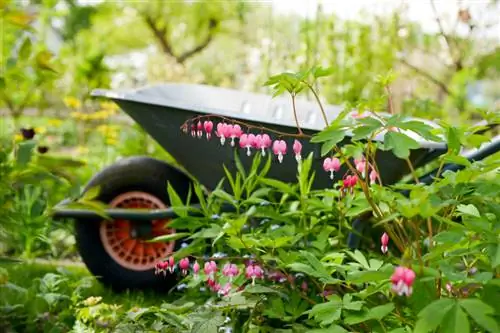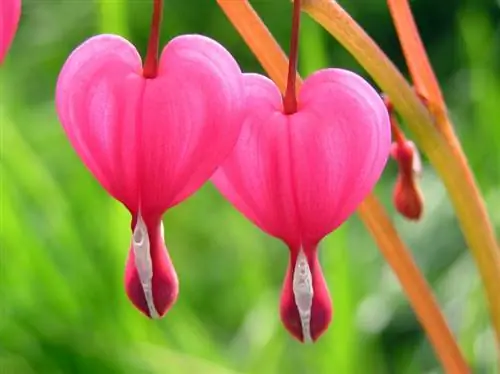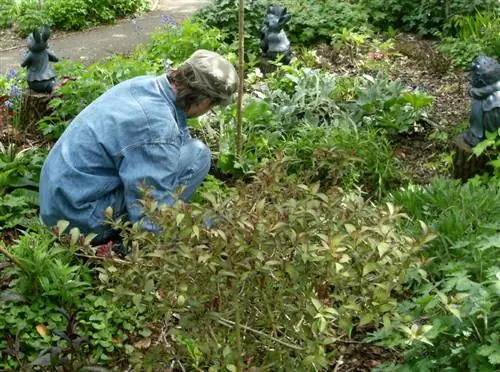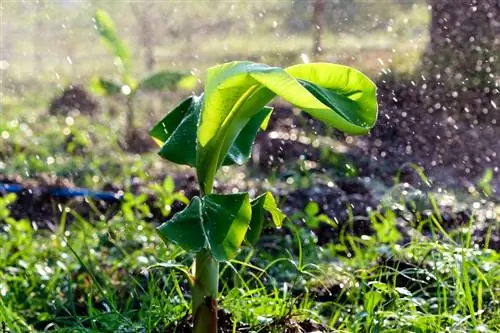- Author admin [email protected].
- Public 2023-12-16 16:46.
- Last modified 2025-01-23 11:20.
The bleeding heart (Dicentra spectabilis) is a densely grouped perennial with light green feathery leaves. In April and May, tall, quite fleshy stems develop, which bend under the weight of the heart-shaped flowers strung like on a pearl necklace - which gave the plant its name. The pink flowers with the white, hanging “tear” are a symbol of vain love and thrive best in light partial shade. The plant does not require particularly intensive care.
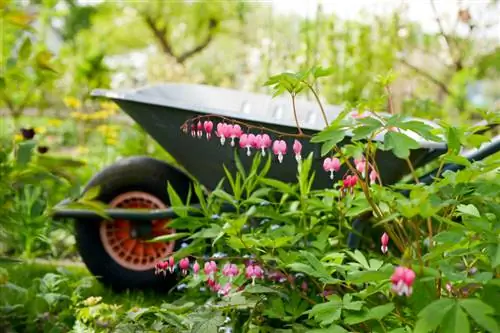
How do I properly care for the bleeding heart?
When caring for bleeding heart, care should be taken to water moderately and regularly to avoid dryness. Organic fertilizer, such as mature compost, can be added in spring and fall. Yellow leaves may be normal after flowering.
When and how often does the Bleeding Heart have to be watered?
The perennial should not dry out, especially during the flowering period. Short-term dryness is usually tolerated without any problems, but the bleeding heart does not produce flowers during this time. When it is dry, water moderately but more often. Waterlogging and dryness should be avoided as much as possible.
When and with what is the Bleeding Heart fertilized?
As a typical forest dweller, the bleeding heart is quite undemanding and makes do with organic fertilizer (€56.00 on Amazon) (e.g. ripe compost), which you add to the soil in both spring and late autumn attach.
When should the Bleeding Heart be cut?
Flowered shoots should be removed regularly to promote the formation of new flowers. No further pruning is necessary as the perennial retreats completely into its rhizomes after flowering.
Which pests or diseases pose a particular threat to the bleeding heart?
The Bleeding Heart is quite robust and is rarely affected by disease. However, the shoots in spring in particular are very susceptible to being eaten by snails, while voles primarily feast on the roots.
The Bleeding Heart has yellow leaves, what to do?
In most cases, the yellow leaves of Bleeding Heart do not indicate an infestation with pests or a disease; in contrast, they are actually completely normal after the flowering period. After flowering, the leaves turn yellow and eventually die.
Is the Bleeding Heart hardy?
Although the bleeding heart is very sensitive to frost, it can still overwinter outdoors without worry. Since the plant retreats into its underground parts in midsummer, special protection is usually not necessary - only for specimens cultivated in pots. In spring, the tender shoots should be covered when there is a risk of frost so that they do not freeze.
Tip
Be careful when watering: The rather fleshy stems are unfortunately very brittle and therefore break off quickly when touched.

